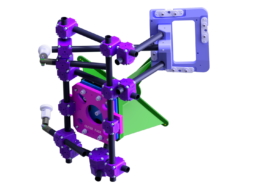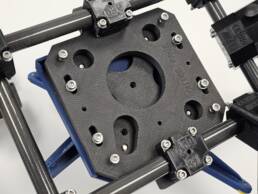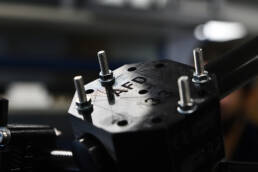Task Objectives
AFD was engaged by a global aerospace integrator to provide design, manufacturing and scanning expertise for an external sensor location fixture for an Intelligence, Surveillance and Reconnaissance (ISR) aircraft.
The requirement was to create some new manufacturing aids for the accurate positioning of external sensor structures that also needed to be lightweight, robust, stiff, affordable, and delivered in a short time-frame.
AFD demonstrated its capacity for innovation and creativity by deriving unique concepts for these fixtures, utilising an array of advanced design software, scanning equipment, and 3D printing machines, alongside the utilisation of advanced polymer and composite materials.
Fixture Design
A significant aspect of the engineering challenge was the requirement to interface externally with the airframe whilst also meeting the positional accuracy requirements associated with sensor mountings.
The fixtures were designed around existing CAD data of the airframe, engineered to locate on access panel apertures or other convenient hard points.
A unique solution involved the creation of a space frame constructed from carbon-fibre composite tubing and 3D printed connection fittings.
Large elements within the fixture included a gap check artifact and a panel aperture frame, both designed for additive manufacturing (DfAM).
The parts were assembled using a combination of epoxy structural adhesive and mechanical fasteners.
Manufacturing Process
The manufacturing approach was aimed at providing a low-cost manufacturing solution for an effective and lightweight fixture, with agile turn-around for both design and manufacturing.
The tools were manufactured using an aerospace standard Stratasys Fortus 450 3D-printing machine, using robust NYLON CF filament.
NYLON CF is an affordable (medium-cost) alternative to traditional metallic materials, offering excellent strength and stiffness and therefore a prime choice for tooling applications.
Carbon fibre composite stock tubing was used to create the space frame, offering adaptability in design and use cases, and minimising weight.
Inspection Process
Each 3D printed part was rigorously inspected post-manufacture, to compare the printed geometry with the design intent (CAD model).
A combination of Verisurf and Siemens NX software was utilised to create an inspection report that included a visual display of the tolerances achieved for the part versus acceptance criteria.
Conclusion
The design, manufacturing, scanning, and assembly of the fixture exceeded expectations, showcasing our pursuit for innovation and excellence.
By leveraging our expertise, we not only adhered to the project’s specifications and timelines but also introduced advanced solutions that set new standards in quality and performance.
We thrive on providing bespoke solutions engineered and crafted specifically to help our customers reduce their project lead times and improve their cost-effectiveness.
Providing high quality solutions to complex engineering and manufacturing challenges is what exemplifies AFD.
Testimonial
Head of Production
“We engaged with AFD having successfully worked together on a previous tooling project. For this project we were very keen to trial a novel method of additive manufacture and lightweight materials. The option to reprint additional or replacement tools brings additional value to the 3D printing solution.”





